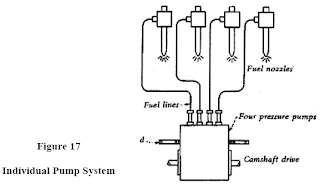Quality Management Systems
WHAT IS QUALITY?
According to the American Society for Quality, “quality” can be defined in the following ways:✔ Based on customer’s perceptions of a product/service’s design and how well the design matches the original specifications.
✔ The ability of a product/service to satisfy stated or implied needs.
✔ Achieved by conforming to established requirements within an organization.
The concept of quality management systems (QMS) is applied in business of all sizes and types. It is a relevant in manufacturing as it is in health care or food …... Of course, quality takes a different meaning depending on whether a product, a service, or a combination of both is offered.
The core of QMS is being able to guide your business towards continual improvement. The main three components to QMS:
- Quality Assurance Systems(QA)
- Quality Control Systems (QC)
- Quality Improvement.
it's not just about the condition of the products you sell or the caliber of services your business offers but also the processes to achieve consistent quality.
Why Is Quality Important?
Business success may simply be the extent to which your organization can produce a higher-quality product or service than your competitors are able to do at a competitive price. When quality is the key to a company’s success, quality management systems allow organizations to keep up with and meet current quality levels, meet the consumer’s requirement for quality, retain employees through competitive compensation programs, and keep up with the latest technology.What Purpose Does a Quality Management System Serve?
✔ Establishes a vision for the employees.✔ Sets standards for employees.
✔ Builds motivation within the company.
✔ Sets goals for employees.
✔ Helps fight the resistance to change within organizations.
✔ Helps direct the corporate culture.
HISTORY OF THE QUALITY MOVEMENT
As early as the 1950s, Japanese companies began to see the benefits of emphasizing quality throughout their organizations and enlisted the help of an American, W. Edwards Deming, who is credited with giving Japanese companies a massive head start in the quality movement.His methods include statistical process control (SPC) and problem-solving techniques that were very effective in gaining the necessary momentum to change the mentality of organizations needing to produce high quality products and services.
Deming developed his 14 points to communicate to managers how to increase quality within an organization.
Deming believed that 85 percent of all quality problems were the fault of management. In order to improve, management had to take the lead and put in place the necessary resources and systems. For example, consistent quality in incoming materials could not be expected when buyers were not given the necessary tools to understand quality requirements of those products and services.
Buyers needed to fully understand how to assess the quality of all incoming products and services, understand the quality requirements, as well as be able to communicate these requirements to vendors.
In a well managed quality system, buyers should also be allowed to work closely with vendors and help them meet or exceed the required quality requirements. According to Deming, there were two different concepts of process improvement that quality systems needed to address:
(1) common (systematic) causes of error, and
(2) special causes of error.
Systematic causes are shared by numerous personnel, machines, or products; and special causes are associated with individual employees or equipment. Systematic causes of error include poor product/service design, materials not suited for their use, improper bills of lading, and poor physical conditions. Special causes of error include lack of training or skill, a poor lot of incoming materials, or equipment out of order.
Seven Basic Tools of Quality
The Seven Basic Tools of Quality is a designation given to a fixed set of graphical techniques identified as being most helpful in troubleshooting issues related to quality.[1] They are called basic because they are suitable for people with little formal training in statistics and because they can be used to solve the vast majority of quality-related issues- Cause-and-effect diagram (also known as the "fishbone" or Ishikawa diagram)
A graphic tool that helps identify, sort, and display possible causes of a problem or quality characteristic.
- Check sheet
- Control chart
- Histogram
- Pareto chart
- Scatter diagram
- Stratification (alternately, flow chart or run chart)
A diagram that uses graphic symbols to depict the nature and flow of the steps in a process










Comments